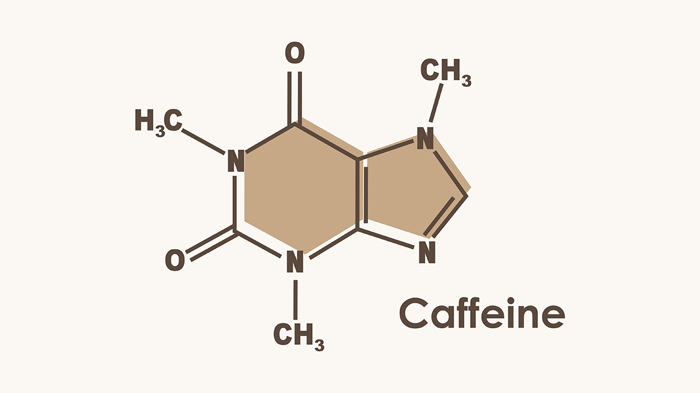We all love coffee—and the caffeine in it. It's a proven pick-me-up. It can improve alertness and focus, and even help to boost short-term memory. It can even temporarily enhance physical performance.
Whether you’re a coffee fiend or a casual sipper, there’s no doubt about it—the caffeine in joe has some serious benefits.
A Quick Recap on What Caffeine Is (In Case You've Forgotten)
Caffeine is a stimulant that occurs naturally in things like coffee, tea, and to a lesser extent, chocolate. It can also be artificially added to foods and beverages, like sodas, sports drinks, and energy drinks.
Caffeine stimulates the central nervous system, heart, and muscles. It works by binding to receptors in the brain and blocking a neurotransmitter called adenosine. This action increases alertness and wakefulness.
But, if you had to guess: What does caffeine look like?
(Until I researched this, my guess was "colorless liquid." Boy, was I wrong.)
It may surprise you to learn that caffeine is a crystal—more specifically, a white crystal.

What Does Caffeine Actually Look Like?
With the naked eye, caffeine simply looks like a plain white powder. It looks a lot like shimmering, crystalline confectioners' sugar (which is a fancy way of saying "powdered sugar").
However, looking at caffeine through an electron microscope, you can see that it is made up of small crystals that are arranged in a lattice-like structure—tiny, thin, white-clear crystals with sharp edges. (Clear quartz comes to mind.)
This lattice-like structure is why caffeine is so stable—it can withstand high temperatures (i.e. roasting and brewing) and a wide range of pH levels without breaking down.
Caffeine crystals are orthorhombic in shape. If you haven't used that word in conversation in a while, don't worry—neither have I. It just means that the crystals have three unequal axes at right angles. Now that that's cleared up...
To put it simply, caffeine crystals look like long, thin, clear quartz crystals, but with sharper edges. Those crystals seem to like to hang out in fibrous, strand-like groups. Can you blame them?
Oh, and don't let all the false color images out there fool you—pure caffeine is not blue, yellow, or pink. It's white.
What Does Pure Caffeine Taste Like?
While we're here, we may as well answer the question: what does caffeine taste like?
It's difficult to describe the taste of pure caffeine because it's so bitter. It's often described as being "very bitter," "astringent," or "harsh." It may not be the worst tasting thing on earth, but it's not something you would want to eat by the spoonful, either (for a variety of reasons).
Pure caffeine definitely has a kick to it, but I think I'll stick to drinking caffeine in coffee rather than ordering it neat.

Chemical Structure of Caffeine
When it comes to its chemical structure, caffeine is very similar to another well-known compound: adenosine.
In fact, caffeine's structure looks so much like adenosine that it can actually bind to the same receptors in your brain. This is how caffeine works its magic: by tricking your body into thinking it's something else entirely.
Caffeine has a molecular formula of C8H10N4O2. In other words, it is made up of eight carbon atoms, ten hydrogen atoms, four nitrogen atoms, and two oxygen atoms.
The way these atoms are arranged gives caffeine its distinct shape—and also its stimulant properties. Again, when caffeine enters your body, its distinct shape allows it to interact with those adenosine receptors in your brain, leading to increased alertness, focus, and energy levels.
Caffeine is a purine alkaloid, which is a type of organic compound with a ring structure containing nitrogen. (Another example of a purine alkaloid is theobromine (found in chocolate).
Caffeine is the strongest stimulant in the methylxanthine class, which sounds like something Walt and Jesse would steal a barrel of on Breaking Bad, but it's just a group of similar compounds that includes stimulants like theophylline (in tea), and our old friend theobromine—found in chocolate. Not as compelling as meth perhaps, but still pretty interesting.

How Caffeine is Absorbed
Caffeine is water-soluble, so it dissolves easily in liquids (fortunately for us).
It's absorbed quickly by the body, and has a variety of effects, depending on the amount consumed. The effects can be felt as soon as 10 - 20 minutes after caffeine is consumed, and generally last for 5 - 6 hours.
How Caffeine Affects the Body
While we've all had too much caffeine before, it's important to remember caffeine's beneficial psychoactive effects: alertness, improved mood, and increased mental focus. It can also help you to be more physically active and temporarily delay feelings of fatigue.
Regular consumption of caffeine also has some beneficial health effects, like improved cardiovascular function and reduced risk of death from certain chronic diseases. The antioxidants in coffee are also beneficial for health, making it a safe and healthy beverage for most people when consumed in moderate amounts.
It has even been used medicinally to treat certain medical conditions such as headaches, migraines, and even asthma.
And without caffeine's unique structure, we wouldn't be able to experience these benefits.
Think about that.
Coffee tastes amazing, but it's the way the caffeine works in our body that makes it extra special. Imagine if all the coffee in the world was decaf.
It would still be delicious, but it just wouldn't be the same.

Conclusion
The next time someone corners you about what caffeine looks like under a microscope, you can impress them with your newfound knowledge.
Sure, it looks like a plain white powder—but it's so much more than that. It's a shiny, crystalline, lattice-like compound that is the perfect shape to fit into your body's receptors to help you wake up and power through your day.
So drink up, and enjoy the benefits of this amazing compound. Just don't stay up all night reading about it for hours or you'll probably end up regretting it in the morning. I'm speaking from experience here.
Now go brew some strong coffee, and take a moment to appreciate the complex chemistry that makes it all possible.
And, of course, those tiny crystals of caffeine in every coffee bean that give us the boost we need to make it through the day.
Tiny crystals, we salute you—you make the world a better place. Just don’t get too comfortable in there, or you might find yourself in hot water.






